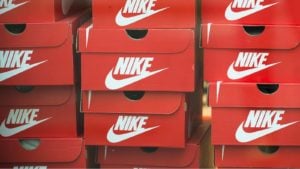Retail stocks continue to underperform.
Year to date (YTD), the S&P Retail Select Industry Index is up 0.35% compared to a 7% gain in the benchmark S&P 500 index. Over the past 12 months, the S&P retail index has risen 7% versus a 27% increase in the S&P 500. The main reason for the poor results is a pullback in consumer spending. Truthfully, people are grappling with higher interest rates that are used to lower inflation.
Simultaneously, consumers have favored spending on travel and experiences post-Covid-19, over spending on clothing, home décor, and discretionary items. The situation for retailers could get worse if the economy declines in coming months and consumers further tighten their spending. Already, troubling signs are presenting. U.S. retail sales declined 0.8% in January following a 0.4% increase in December. The January decrease in spending was much worse than economists’ forecasts for a 0.3% drop in retail sales.
And so, let’s examine three retail stocks that face potentially perilous times.
Home Depot (HD)

Home Depot (NYSE:HD) has been struggling with a slowdown in renovation projects being undertaken by homeowners. And, the situation could worsen if consumers cut back on spending even more this year. Management at Home Depot has repeatedly said that they face a difficult operating environment. In truth, demand for home improvement projects cooled following the pandemic. Also, the company struggles with consumer spending pullback. In particular, spending on big-ticket items like appliances is down because of inflation and high interest rates.
Consequently, in its most recent earnings report, Home Depot expects sales to grow only about 1% this year. That compares with a 1.6% increase forecast on Wall Street. The retailer expects to open only about a dozen new stores in the U.S. and Canada this year. It awaits a rebound in consumer spending. HD fell 4% on news of the company’s 2024 outlook. The gloomy forecast completely overshadowed the company’s report of better-than-expected financial results for the fourth and final quarter of 2023.
Starbucks (SBUX)

Pricey coffee and iced cappuccinos could be among the items consumers forego if the economy sours this year. That would be bad news for Starbucks (NASDAQ:SBUX), whose retail outlets specialize in expensive caffeinated drinks.
Look to China to see the impact that a slowing economy can have on Starbucks and its earnings. At the end of January, Starbucks issued financial results for Q4 2023. Unfortunately, it missed Wall Street forecasts across the board as its international sales sputtered. This is attributed to a decline in China, where the economy and consumers have rolled over.
Starbucks’ international same-store sales posted growth of 7% in Q4 2023. That was only about half the 13.2% growth forecast among analysts who track the company’s progress. In the company’s second-largest market of China, average item cost purchased at Starbucks fell 9% in the quarter. Owing to the poor results, Starbucks revised down its full-year sales outlook. For this year, the company anticipates revenue growth of 7% to 10%, down from its previous forecast of 12% growth. And that lowered outlook assumes a strong economy and continued spending on the part of American consumers.
Additionally, SBUX stock is down nearly 10% over the last 12 months.
Nike (NKE)

Like Starbucks, sneaker and athletic apparel giant Nike (NYSE:NKE) is struggling with a slowdown in consumer spending in China. This has undoubtedly hurt its financial performance. Up until now, the U.S. has remained a bright spot for Nike and its stock.
But, should Americans cut back their spending, it would certainly put NKE stock at risk. It appears Nike is already falling victim to declining consumer spending. The company just announced plans to cut 2% of its global workforce, or more than 1,600 jobs. Like many other corporations, it is trying to lower expenses in the face of weakening demand.
Nike previously warned that retailers are reducing their orders for its sneakers and athletic apparel through wholesale channels,. And it continues to be impacted by the economic slowdown in China, its second largest market. Last December, while reporting disappointing earnings, Nike announced a $2 billion cost savings plan over the next three years. The cost cuts include reducing management positions and about $450 million in employee severance costs. Poor results and glum outlooks pulled NKE down 13% over the last 12 months, including a 2% decline this year.
On the date of publication, Joel Baglole did not have (either directly or indirectly) any positions in the securities mentioned in this article. The opinions expressed in this article are those of the writer, subject to the InvestorPlace.com Publishing Guidelines.
